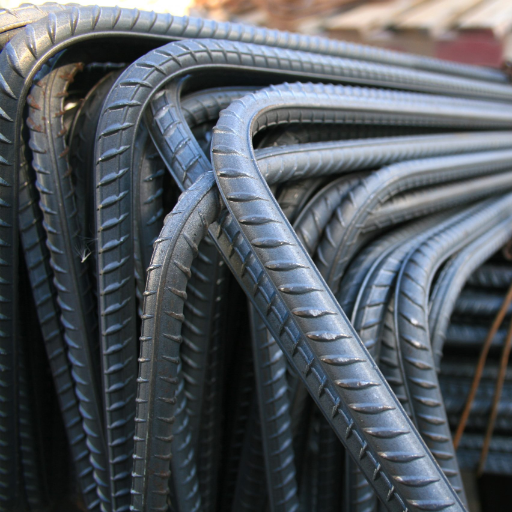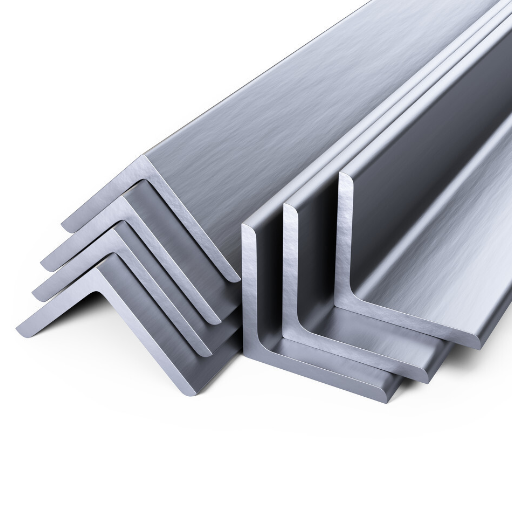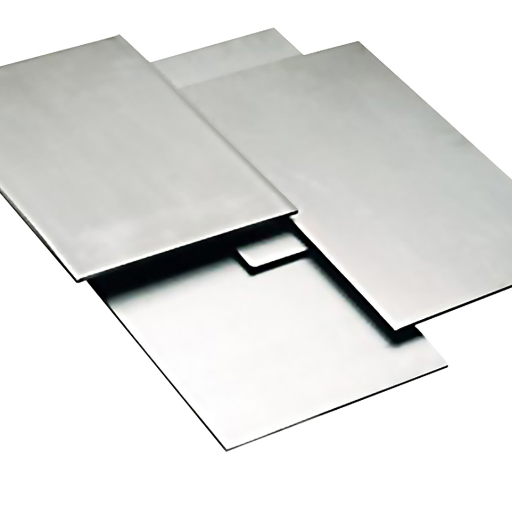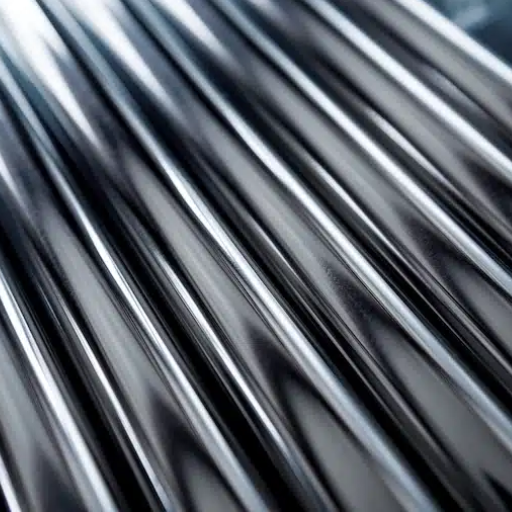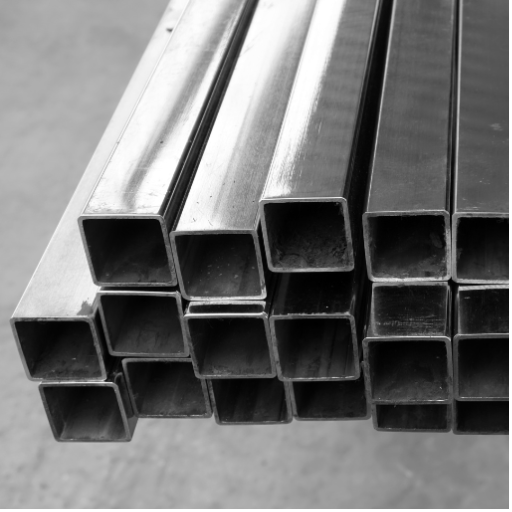From construction and automobile to appliance manufacturing, galvanized steel sheet coils have been used across various industries. These coils are essential for infrastructure and production because they are cost-effective and provide amazing resistance to corrosion along with long-lasting durability. This guide seeks to outline every detail of galvanized steel sheet coils and their uses, including the production processes, properties, and benefits. So whether you are a professional who works with these materials or a curious reader wanting to increase your understanding of industrial material, this article will explain the importance of galvanized steel sheet coils in modern industry.
What are galvanized sheet metal coils and how are they made?

The zinc oxidation coating methods and the protective purpose performed in automotive and construction industries are explained in the following paragraphs and in simple terms. Coil steel sheets that are exposed to oxidation and corrosion have to go through the process of galvanization, which gives it a protective layer of zinc that prevents severe rust and helps increase the lifespan of the metal sheet. This enhances the quality of construction, automotive, and many other demanding industries. Galvanization involves submersing the steel sheets into molten zinc or application through electroplating of zinc. The galvanized layer mitigates damages from the environment, which increases the chances of preventing oxidation and rust.
Understanding the galvanization process
The galvanization process combines both craftsmanship and mechanics at each stage of the operation. Initially, the steel sheets undergo precursory cleaning to guarantee that no contaminants remain, and the zinc can attach without disruption. This is achieved in most cases with chemical baths and an annealing process. After cleaning, the sheets are dipped in molten zinc (hot-dip process) or coated through some electroplating, depending on the coating thickness and intended use. The material receives a coating that increases its strength and ability to withstand corrosion. The protection provided by the coating improves performance. With my cumulative experience, the modern industrial advancement in technology has enhanced processes, increasing efficiency, while creating higher quality materials for industrial needs.
Types of zinc coating methods for steel coils
The two main techniques to coat zinc on steel coils is hot-dip galvanizing and electroplating. The hot-dip galvanizing method involves submerging the steel into a bath of molten zinc which creates a thick and durable layer suitable for demanding outdoor and heavy-duty applications. Whereas electroplating applies a thin and uniform zinc coating by means of an electric current. This method is used when precision and aesthetics are priorities. While both methods provide exceptional protection against corrosion, the choice depends on the specific needs of the final application.
Common grades and specifications of galvanized steel
Allow me to stress how performance critical the grade and specification selection for galvanized steel is. The more common include G40, G60, and G90, which indicate the amount of zinc coating used, and the higher the number, the better the resistance to corrosion. Specifications like ASTM A653 or A123 detail the material characteristics, coating, and mechanical standards for different applications. Selecting the correct combination is driven by exposure to the environment, the structure itself, and even how it looks.
What are the advantages of using galvanized steel coils?

Combining my knowledge in the field and experience with galvanized steel coils reveals several distinct benefits for a myriad of purposes. Most noticeably, their ability to resist corrosion protects their integrity in harsh environments, thus lowering maintenance expenses over time. Besides, they offer remarkable strength, further increasing their utility for use in construction. The zinc coating also makes it easier to finish since it can be left as is or painted over to enhance visual appeal. In summation, these steel coils are efficient and economical for other projects requiring high performance, durability, and reliability.
Corrosion resistance properties of galvanized steel
Galvanized steel possesses remarkable corrosion resistance because of the rust-preventing zinc coat which prevents moisture and oxygen from penetrating. The zinc layer acts as a shield to steel, and if the coating is scratched or removed, it selflessly dissolves to safeguard the steel that lies beneath. It extends the life of steel, making it a good option for construction, automotive, and marine industries where steel is put through rugged use.
Durability and longevity of galvanized sheet metal
the strength and life span of galvanized sheet metal is remarkable. This advantage is due to the protective zinc coating which fights corrosion even in extreme temperatures. From structural frameworks to outdoor equipment, I have witnessed the long-term performance of galvanized steel, time and time again. In addition to being reliable and cost-efficient across multiple industries, it also requires very little upkeep.
Cost-effectiveness compared to other materials
The cost of galvanized steel is lower compared to other materials, and its low upkeep and durability add to its advantages. Unlike untreated steel that corrodes and needs replacement or expensive repairs, galvanized steel’s zinc coating sure extends its life, reducing costs in the long run. Moreover, the steel is less expensive than stainless steel, which makes it a good upfront investment considering its performance in multiple applications. Businesses looking for a good balance between cost and performance would find this material economical due to its strength, low maintenance, and good upfront investment.
How to choose the right galvanized steel coil for your project?

check out the specifications of your project when picking a galvanized steel coil. Make sure to take into account the environmental factors: is the coil facing high temperatures, humidity, or corrosive elements? The coating type and thickness, G40 or G90 for example, should provide you with adequate protection. Moreover, check if the material’s thickness, strength, and formability are appropriate for your constructions and designs. Budget is another important deciding factor because galvanized steel coils are very diverse. Make sure to use these tips to find optimal performance while minimizing expenses. Points like these are crucial to achieving the best value for your project.
Factors to consider: thickness, coating weight, and grade
While choosing galvanized steel coils, it is advisable to start with the thickness to control the structure load and guarantee durability, while avoiding complications in fabrication. Coating weight is also critical in providing resistance to corrosion; heavier coatings are best suited for harsher conditions and prolonged service life. Finally, the grade needs to meet the mechanical properties for your application, which should reasonably incorporate strength, ductility, and formability for optimal results.
Industry-specific requirements for galvanized steel
Here is the way I analyze the particular requirements of industry sectors on galvanized steel based on my experience:
- Thickness: The requirements of the galvanized steel’s thickness are particular and are based on the galvanized steel load to be endured. For example, if you’re using the steel in construction frameworks, you’d want the material to be thicker due to the strucutal demands. Lighter applications such as ductwork may work with thinner steel as it relieves the weight while still serving its purpose.
- Coating Weight: For my purposes, coating weight directly affects the ability to resist rust, and hence I always analyze the environment where the steel would be utilized. In cases where the steel is subjected to heavy moisture, salt, or chemicals like marine or industrial environment, heavier zinc coatings like G90 or higher would be necessary for greater protection. For indoor use, milder coatings like G60 would suffice.
- Grade: Choosing appropriate grade relies on the mechanical attributes crucial for a certain application. If strength is the main concern, I will go with high-strength grades that have exceptional durability. On the other hand, if I need some flexibility to create some complex shapes, materials with higher ductility would be best as they make it easier to bend or form the material without cracking.
These parameters—thickness, coating weight and grade— determine the best-suited galvanized steel for a project. Balancing these characteristics to an application’s environment and requirements ensures optimal performance and efficiency.
Customization options for galvanized sheet metal coils
Galvanized sheet metal coils have a wide range of customization options to suit different project needs. For example, one can choose different steel grades for strength or damped corrosion resistance along with the coating thickness, and also specify width, length, and thickness for certain finer applications. Moreover, other custom surface treatments can be done to achieve specific targets whether they are functional or dramatic in nature, while coatings may be placed in special shapes or colors to suit a specific brand or design. Such flexibility makes these products applicable to many industries and uses.
What are the common applications of galvanized steel coils?

galvanized steel coils have exceptional versatility and are used in a wide array of industries. Because of their resistance to rust and enduring nature, they are the primary material used in construction for roofing, wall panels, and structures. Automotive manufacturers depend on them for body panels, chassis parts, and other components to ensure the vehicles are durable and dependable. Additionally, they are essential in the making of many household appliances such as refrigerators, washing machines, and air conditioners. Moreover, I have witnessed their use in agricultural equipment, storage tanks, and even fencing, demonstrating their adaptability in a variety of settings.
Use in construction and roofing industries
Steel and aluminum are very essential in construction and roofing because of their lightweight, strength, and resistance to harsh weather. They are used in cladding, roofing, building frameworks, and more. Steel and aluminum are structural in nature which makes them versatile. Moreover, their recyclability renders them as a sustainable material for modern eco-friendly building practices. Steel and aluminum are adaptable, serving both functional and aesthetic purposes across modern architectural designs.
Automotive and manufacturing applications
In automotive and manufacturing applications, I can confidently observe the use of alloys and composites in advanced materials, which has indeed revolutionized these industries. The reasons for choosing these materials are that they outperform in several important areas:
- Strength and Durability
Ultra materials have high-strain parts like engine components, chassis, and suspension systems built to withstand stresses. Their precision guarantees both vehicles and machines suffer no damage in terms of structural failure while under immense internal pressure.
- Lightweight Properties
Reducing weight in automotive construction is paramount for improved fuel economy and performance. As to meet these goals without sacrificing strength, Aluminum alloys are very lightweight. Therfore, manufacturers are able to design more advanced, faster, and more efficient vehicles.
- Corrosion Resistance
Manufacturing materials must stand up to environmental exposure including moisture, salt, and various chemicals. Corrosion resistant alloys assist in the preservation of integrity and functionality of vehicle components and machine parts, which reduces maintenance costs while allowing for an extended lifespan.
- Thermal Efficiency
High operating temperature regions such as engine blocks or exhaust systems require high-grade materials that offer great thermal conductivity while being heat resistant. This improves not only operational performance but safety and efficiency as well.
- Formability and Precision
The exactitude with which a material can be formed, welded, or machined is very demanding in the context of manufacturing. Steel and aluminum metals, together with composite materials, respond to these requirements because of their great adaptability to intricate geometries and advanced technologies to produce them.
- Eco-Friendliness and Recyclability
Due to environmental protection focus, most of the materials applied in automotive and other manufacturing industries are recyclable which lessens waste and negative ecological impact. This becomes critical for industries in their efforts to meet international standards towards sustainability.
By assessing these factors, manufacturers are able to design and create vehicles and machinery that are safer and more effective. Matters such as accuracy, material strength, eco-friendliness and weight heavily influence the materials which are used for manufacturing. Indeed, the right advanced materials can foster innovation in these sectors by effectively combining usability and ecological balance.
Other industries benefiting from galvanized steel
it is quite obvious how galvanized steel is critical across multiple industries other than automotive and heavy equipment. Solutions in construction, building structures, assisting in roofs to school and hospital infrastructures like braces, bends or props are all made out of steel. Also, galvanized steel is further of aid in the agricultural industry, withstanding harsh and dull weather conditions, making it suitable for fences, silos and irrigation systems. The energy industry also depends on it for use in renewable energy systems like the solar panel’s support system and the wind turbines. These are just a few of the numerous systems, tools, and structures that are made and that require steel in order for it to complete its task and functions. These examples show not only how galvanized steel plays a pivotal role in agriculture and construction, but how it has become essential over the years.
How to properly store and handle galvanized steel coils?

The dry, well ventilated areas will help manage galvanized steel coils because they reduce moisture accumulation and corrosion risk. To prevent contamination and surface damage, coils must be stored off the ground by using wooden or padded supports. During dust, dirt, and scratch protective covering may also be employed to guard the equipment. Steel coils require safe and precise movement, thus always use lifting devices such as clamp hooks made for coils. Following these measures will maintain the quality and prolong the life of galvanized steel coils.
Best practices for storage to prevent damage
proper storage of galvanized steel coils is critical to maintaining their quality. I always suggest keeping coils in a clean, low humidity area, as high humidity can lead to corrosion. Keeping them off the ground with wooden supports or appropriately padded blocks helps prevent surface scratches, as well as contamination. In my opinion, protective coverings are some of the best materials, and not just for dust and dirt protection, but for covering the coils to reduce scratching during handling. While moving the coils, safety and efficiency are never compromised—proper lifting equipment such as coil hooks or clamps is non-negotiable. Following these procedures has consistently protected the quality and durability of galvanized steel coils in my operations.
Safe handling techniques for galvanized sheet metal
The safe treatment of galvanized sheet metal requires proper planning and the appropriate equipment in order to avoid damage and ensure the safety of personnel. Always wear gloves to prevent cuts caused by sharp edges, and use non-abrasive lifting mechanisms such as suction cups or clamps with soft pads to pick the material up in a way that does not leave scratches. Make sure the sheet metal is kept on a flat and steady surface. Also, use space to ensure that sheets do not come into direct contact with each other. Furthermore, do not pull sheet metal across surfaces and always use proper lifting techniques to minimize the chances of bending or contamination of the surface. Following these practices will help preserve the value of the material while minimizing safety concerns.
What are the differences between hot-dip and electrogalvanized steel coils?

The basic distinction between hot-dip galvanized steel coils and electro galvanized steel coils is their coating techniques and uses. From what I have learned in the field, I would say that in hot-dip galvanizing, the steel is dipped into molten zinc which creates a thicker, very enduring coating suitable for outdoor structures that are heavily corroded. In contrast, electrogalvanized steel is coated by an electrochemical process which leads to a thinner and more uniform coating ideal for applications with polished surfaces such as automotive or appliance manufacturing. Both types serve exceptional defense against corrosion, but the difference is in which type is used primarily depends on the requirements in performance and visual aspects of the project.
Comparing coating processes and characteristics
While discussing hot-dip galvanizing and electrogalvanizing, I prefer to use the key parameters approach. This was useful in making a decision that best suits the needs of a given project. This is how I would evaluate them:
- Corrosion Resistance
When it comes to protecting against corrosion due to humidity and saltwater, hot-dip galvanizing is preferred over electrogalvanized steel as it has thicker zinc coating which adds to its durability and resistance to corrosion. Electrogalvanized steel is useful indoors as it has less corrosion resistance and thinner zinc coating.
- Durability
The thicker coating applied through hot-dip galvanizing increases resistance to mechanical damage, making it ideal for outdoor construction materials and heavy-duty infrastructure. Unlike electrogalvanized steel, hot-dip galvanized has a rougher coating that can withstand wear and tear. Electrogalvanized steel has a slightly thinner coating that makes it less ideal for heavy-duty applications but is useful for subtle construction due to its sleek aesthetic.
- Surface Finish
If smooth and uniform finishes are what you are going for, electrogalvanizing is your answer. Hot-dip galvanizing has a more functional approach and may not suit applications such as automotive and appliance manufacturing where stainless steel surfaces are a norm.
- Cost-effectiveness
In large scale construction projects, hot-dip galvanizing is preffered due to the reduced initial costs and lowered maintenance requirements post construction. Whereas, if the project on hand is smaller or dose not require zink protection, electro galvanizing is far more budget friendly.
- Application Needs
Typically, it comes down to the application. Hot dip galvanizing is best for structural steel in bridges or outer fencing. On the other hand, car bodies, electrical appliances, or any components that require precision and beauty are better off with electroplating.
After analyzing these parameters and matching them with your project requirements, it becomes clear which coating process is more appropriate. In any case, each method has its advantages, and the selection of a coating process must consider its purpose and operational surroundings.
Choosing between hot-dip and electrogalvanized for your needs
Evaluate the priorities of your project first from the two hot dip galvanizing and electro galvanizing coating techniques. In harsher environments, hot dip galvanizing provides more corrosion protection. While for applications requiring high precision and appearance, electrogalvanizing is the best. To optimize effectiveness and make the right decision, consider level of exposure to the environment, exposure to physical stresses, and aesthetic needs of the project.
How to find a reliable galvanized steel coil supplier?

Finding a reputable supplier of galvanized steel coil can be challenging without prior industry knowledge and experience. it is best to begin with looking up suppliers who have successfully delivered quality products in the past. Focus on obtaining certifications which are relevant to the industry as these show commitment to compliance and quality. Request for client references and client feedback in order to evaluate their customer service and reliability. Apart from this, evaluate their production capacity to determine if they can meet your project requirements, specifications, and volume. They should also have reasonable prices alongside effective communication. If you take these steps, you will undoubtedly have a supplier who will enhance your business.
Key factors to consider when selecting a supplier
To choose the appropriate supplier, pay attention to their existing quality certifications and reputation within the industry, as well as whether the supplier can meet their requirements. Also assess if the supplier has production capabilities, reasonable pricing, and good communication. By focusing on these factors, you will establish a partnership that is effective in meeting your business objectives.
Questions to ask potential galvanized steel manufacturers
While evaluating producers of galvanized steels, I pay attention only to the most important aspects and determine whether they integrate with the project requirements and industry standards. First, I inquire about their certifications – do they have ISO and other internationally accepted quality guarantees? This verifies their commitment to quality. I also follow up on their manufacturing capabilities, lead times, and whether they achieve the required volumes within the timelines outlined. After that, I try to find out how they source their materials; knowing where their raw steel comes from provides some insight into the level of fidelity and dependability I can expect. In the end, I ask about the coating details and, in particular, the thicknesses and the compliance with the relevant standards. In these sensitive areas, responsiveness and directness often determine if the manufacturer will be a good partner.
Importance of quality certifications and standards
As mentioned, quality certifications and standards are valuable because they guarantee that a steel manufacturer follows strict guidelines pertaining to the quality, reliability, and safety of the steel produced. This is evident in certifications like ISO 9001 which attest to a firm’s quality management systems, or compliance with ASTM and EN standards which show adherence to international specifications. For clients, these certifications serve to validate that the products will withstand the required conditions, thus mitigating risks and optimizing project success. Certified manufacturers retain a mark of professionalism and responsibility which makes them credible partners for any engineering or construction works.
Reference
- Galvanized Steel Coils: Essential Information You Need to Know – A detailed overview of the hot-dip galvanizing process and its applications.
- COATED STEEL COIL – Sheffield Steel – Information on various coatings for steel coils, including hot-dipped galvanized and electro-galvanized.
- GALVANIZED STEELCOIL – U.S. Steel – A document detailing standards like ASTM A653 and ASTM A792 for galvanized steel coils.
Frequently Asked Questions (FAQs)
Q: What is hot dipped galvanized steel and how is it produced?
A: Hot dipped galvanized steel is a type of coated steel produced by immersing steel sheets or coils in a bath of molten zinc. During this hot dip process, the zinc forms a protective barrier between the steel substrate and the environment, providing excellent rust and corrosion resistance. This continuous hot-dip method is widely used to create galvanized steel sheet and galvanized coil products.
Q: What are the main applications of galvanized steel sheet coils?
A: Galvanized steel sheet coils are mainly used in various industries due to their durability and corrosion resistance. Common applications include construction (roofing, siding, and ductwork), automotive manufacturing, appliance production, and general industrial uses. The versatility of hot dipped galvanized steel coil makes it a popular choice for both indoor and outdoor applications where protection against rust is crucial.
Q: How does galvanized steel compare to stainless steel in terms of corrosion resistance?
A: While both galvanized steel and stainless steel offer corrosion resistance, they differ in their composition and performance. Galvanized steel is carbon steel coated with zinc, providing a sacrificial layer that protects the underlying steel. Stainless steel, on the other hand, contains chromium, which forms a passive oxide layer for protection. Galvanized steel is generally more cost-effective and suitable for many applications, while stainless steel offers superior corrosion resistance in more aggressive environments.
Q: What is the difference between hot-dipped galvanized and electrolytic galvanized steel?
A: The main difference lies in the process by which zinc is applied to the steel. Hot-dipped galvanized steel is produced by dipping steel into molten zinc, resulting in a thicker coating with a characteristic spangle pattern. Electrolytic galvanized steel is created by electroplating zinc onto the steel surface, resulting in a thinner, more uniform coating. Hot-dipped galvanized steel generally offers better corrosion protection, while electrolytic galvanizing allows for more precise control of coating thickness.
Q: Can hot dipped galvanized steel coil be customized for specific applications?
A: Yes, hot dipped galvanized steel coil can be customized to meet specific requirements. Steel companies often offer options to adjust the zinc coating thickness, surface finish, and even add additional treatments like chromate conversion or oiling. Some manufacturers also provide color coated or galvanized prepainted options. To explore customization possibilities, it’s best to contact us or your preferred steel supplier directly.
Q: What is the ASTM A653 standard, and why is it important for galvanized steel sheet?
A: ASTM A653 is a standard specification for steel sheet, zinc-coated (galvanized) or zinc-iron alloy-coated (galvannealed) by the hot-dip process. This standard is important because it defines the requirements for chemical composition, mechanical properties, and coating weight for various grades of galvanized steel sheet. Adherence to ASTM A653 ensures that the galvanized steel meets specific quality and performance criteria, making it easier for customers to select the right product for their needs.
Q: How does the galvanizing process affect the weldability of steel?
A: The galvanizing process can impact the weldability of steel, but with proper techniques, galvanized steel can still be welded effectively. The zinc coating may produce fumes during welding, requiring adequate ventilation and safety measures. Additionally, the coating can affect the quality of the weld if not properly addressed. Techniques such as removing the zinc coating at the weld area, using specific welding parameters, or employing specialized welding processes designed for galvanized steel can help ensure strong, reliable welds.
Q: What is the significance of the spangle pattern on hot dipped galvanized steel?
A: The spangle pattern on hot dipped galvanized steel is a visual characteristic resulting from the crystallization of the zinc coating as it cools. The size and appearance of the spangle can vary depending on factors such as the steel composition, zinc bath additives, and cooling rate. While the spangle pattern doesn’t significantly affect the corrosion protection, it can influence the aesthetic appearance of the galvanized steel. Some customers prefer a specific spangle size for visual reasons, and steel producers can often control this aspect during the galvanizing process.

